Surprising evidence of daily life and of one of Rome’s greatest conflicts is found in a wealthy residence in Tuscany
Over the past several years in the modern village of Vetulonia (the ancient Etruscan settlement of Vetluna), 10 miles northwest of Grosseto, archaeologists from the University of Perugia and the local museum have been excavating a large house. The team’s leader, archaeologist Simona Rafanelli, believes it belonged to a powerful Etruscan family for at least 200 years, until the first quarter of the first century b.c. “This was a rich villa measuring more than 4,300 square feet, with 10 main rooms in addition to other back rooms and servants’ quarters,” says Rafanelli. From at least the third century b.c. on, she explains, was a prosperous time for Vetluna, which enjoyed good relations and a peaceful coexistence with Rome. “This can be seen not only in this house, which we assume was built in this flourishing period,” Rafanelli says, “but also in the expansion of the settlement, as well as in the construction of other rich houses and new decoration of sacred buildings.”
Denne historien er fra July/August 2018-utgaven av Archaeology.
Start din 7-dagers gratis prøveperiode på Magzter GOLD for å få tilgang til tusenvis av utvalgte premiumhistorier og 9000+ magasiner og aviser.
Allerede abonnent ? Logg på
Denne historien er fra July/August 2018-utgaven av Archaeology.
Start din 7-dagers gratis prøveperiode på Magzter GOLD for å få tilgang til tusenvis av utvalgte premiumhistorier og 9000+ magasiner og aviser.
Allerede abonnent? Logg på
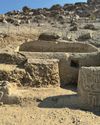
ORIGINS OF PERUVIAN RELIGION
While investigating looters' holes at the site of La Otra Banda in northern Peru's Zaña Valley, archaeologist Luis A. Muro Ynoñán of the Field Museum and the Pontifical Catholic University of Peru spotted carved blocks around seven feet below the surface.
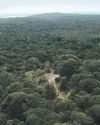
ISLAND OF FREEDOM
Many of the enslaved Africans sent to Brazil beginning in 1549 were from what is now Angola, where one of the most widely spoken languages was Kimbundu.
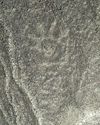
NAZCA GHOST GLYPHS
From the 1940s to the early 2000s, geoglyphs were discovered in the Nazca Desert of southern Peru depicting animals, humans, and other figures at the rate of 1.5 per year.

COLONIAL COMPANIONS
The ancestry of dogs in seventeenth-century Jamestown offers a window into social dynamics between Indigenous people and early colonists.
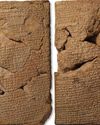
BAD MOON RISING
The British Museum houses around 130,000 clay tablets from ancient Mesopotamia written in cuneiform script between 3200 B.C. and the first century A.D.
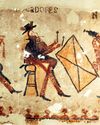
DANCING DAYS OF THE MAYA
In the mountains of Guatemala, murals depict elaborate performances combining Catholic and Indigenous traditions
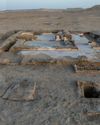
LOST GREEK TRAGEDIES REVIVED
How a scholar discovered passages from a great Athenian playwright on a discarded papyrus

Medieval England's Coveted Cargo
Archaeologists dive on a ship laden with marble bound for the kingdom's grandest cathedrals
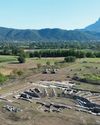
Unearthing a Forgotten Roman Town
A stretch of Italian farmland concealed one of the small cities that powered the empire
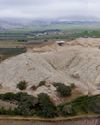
TOP 10 DISCOVERIES OF 2024
ARCHAEOLOGY magazine reveals the year's most exciting finds